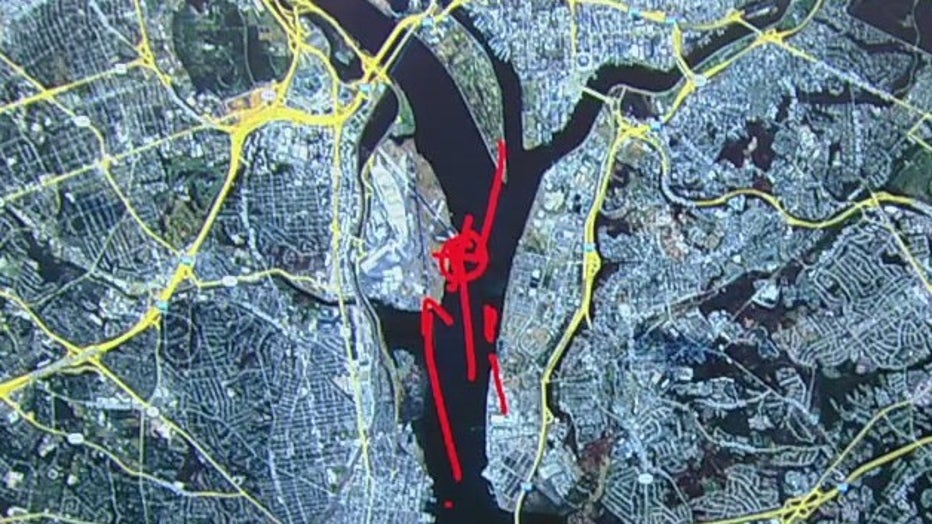Airspace expert explains what needs to be evaluated to determine cause of Reagan Airport crash
ARLINGTON, VIRGINIA - JANUARY 30: Emergency response units work at the crash site of the American Airlines plane on the Potomac River after the plane crashed last night on approach to Reagan National Airport on January 30, 2025 in Arlington, Virginia
It'll take months for investigators to pinpoint the exact cause of this Reagan Airport tragedy.
We're getting a better idea of what transpired moments before the collision.
The routes being used by both pilots show an intersection on the map.

We spoke to someone very familiar with this airspace.
He believes the communication between the control tower and the pilots of both aircraft will be key in getting to the bottom of this tragedy.
What they're saying:
"What we have here is a very unfortunate confluence of events," said Dr. Mike McCormick.
McCormick is a former vice president of the FAA Air Traffic Organization and an expert on airspace rules over the D.C. area.
What we know:
He says military helicopters are taught to give the right of way to commercial jets landing at Ronald Regan Airport.
"That route is designed so that the helicopters would fly east over a peninsula away from Washington National Airport in order to allow for arrivals and departures on the primary runway," said McCormick.
He says because of strong northwest winds, Flight 5342 requested and was given approval to land at a secondary runway.
Air Traffic Control then instructed the Black Hawk to pass behind the commercial flight.
Featured
LIVE DC plane crash updates: Midair collision leaves no survivors
Officials do not believe anyone survived the midair collision between an American Airlines passenger jet and a military helicopter over Ronald Reagan National Airport near Washington, D.C. on Wednesday night.
Doctor McCormick believes the helicopter pilot didn't see the incoming jet.
"With the attitude of the aircraft landing at Washington National runway 3-3, it would be difficult for the helicopter to visually acquire it because the lights would have been turned away from the helicopter," he said.
He says the same would have been true for the pilots of the American Airlines flight.
"The aircraft would have difficulty visually acquiring the helicopter because they were focused on the landing," he said.
Dig deeper:
Then, there is the question of the traffic collision avoidance system, or T-CAS.
It is designed to alert Air Traffic Control when aircraft are too close to each other.
Dr. McCormick says the system is only designed to operate in-flight and not when aircraft are at low altitude or close to airports.
Featured
DC plane crash timeline: What to know about the deadly crash
Hundreds of responders have removed at least 28 bodies from the icy waters of the Potomac River after a deadly plane crash, according to officials as of Thursday morning.
"Otherwise, there would be a constant T-CAS alert going off in and around the vicinity of the airport," McCormick said.
The flight data recorder or black box has not been recovered yet.
We expect the NTSB preliminary report to be out in about 30 days.

